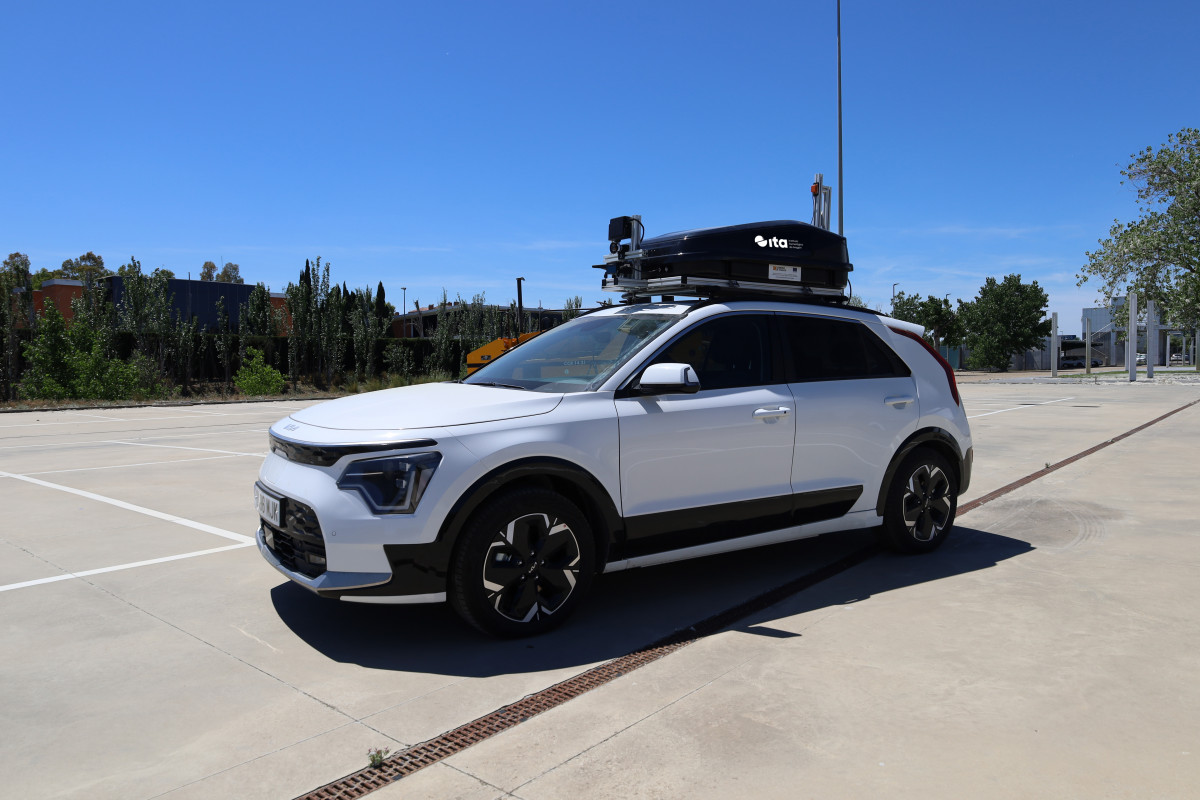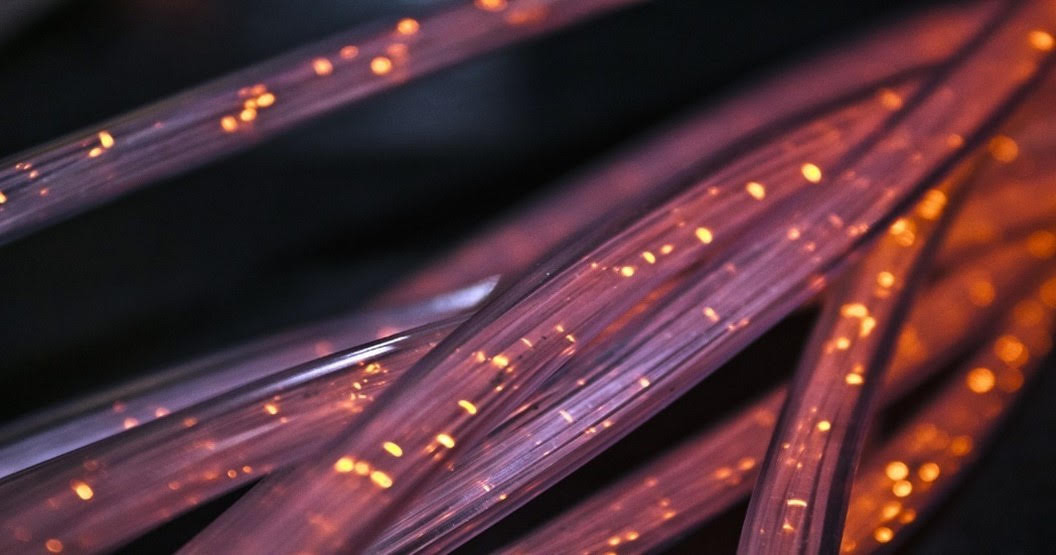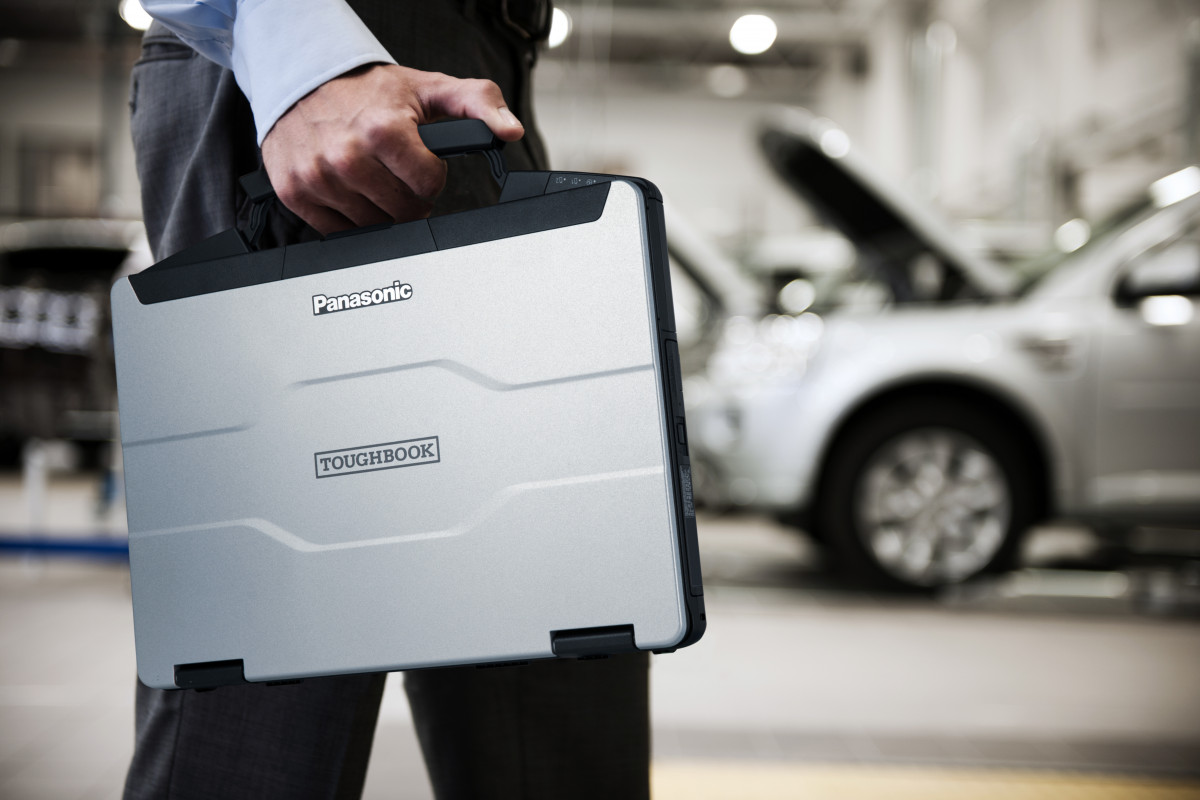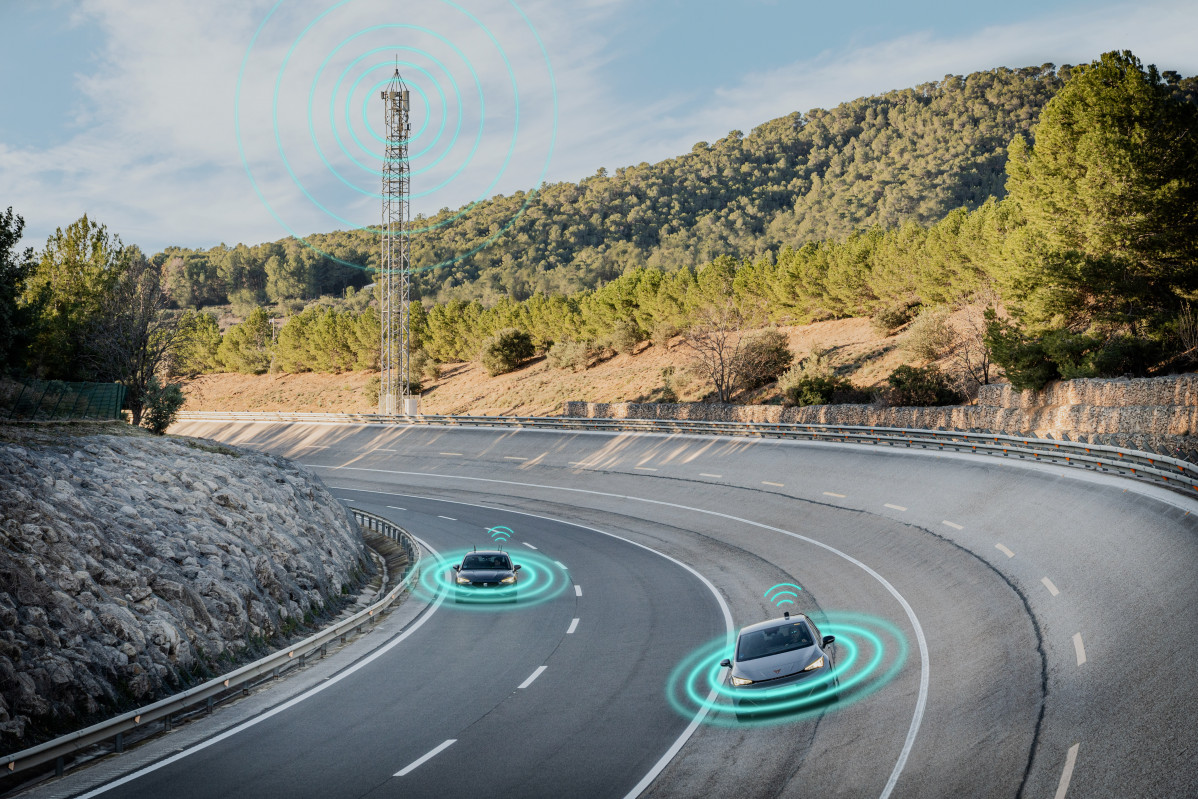5G, progressing in automotive with some way to go

Efficiency levels in connectivity, interrelation between machinery, devices and sensors, data collection and cybersecurity require powerful communication channels, and in this sense the automotive world has been focusing its attention on 5G technology. That is why AutoRevista has contacted a wide range of specialists in this field. Article published in AutoRevista 2.398.
Adán Piñero, from the Sustainable Mobility Technology Mission department at the Instituto Tecnológico de Aragón/Aragon Institute of Technology (ITA), explains that the 5G concept generally encompasses a wide range of technologies and areas of application, including the automotive industry, and that in the latter, in terms of infrastructure, public operator networks have invested heavily, especially in Spain (with public support in less populated areas), to enable its deployment as advanced communication networks between vehicles and data centres. ‘This was essential to advance the autonomous car. And what we have on the horizon with low orbit satellites and the emergence of stratospheric HAPS (High Altitude Platforms) is their hybridisation with terrestrial cellular networks to improve coverage and latency at the same time. In research, we have results from major projects that have successfully demonstrated the application of the most advanced features of the new standards”.
On the other hand, as far as manufacturing processes are concerned, Piñero assures that "a progressive implementation of private 5G networks is expected that will allow the unification of internal communications and real-time data capture directly from each machine, line or control device, with quality, integrity and security requirements like never before: we, as ITA, have tried to simulate a digital twin of an electric vehicle by integrating different specialised models of the subsystems and components working concurrently in different data centres across Europe".
In this sense, the part that they consider most delayed in the different releases of the 3GPP - 3rd Generation Partnership Project - of the 5G standard, is the one that will allow the deployment of thousands of IoT sensors in small areas (1 km2). ‘In mMTC (Massive Machine-Type Communications), semiconductor manufacturers will need to develop much simpler and cheaper integrated devices than those currently available to the industry (RedCap architectures). Developments in the connected road that take advantage of the low latency, high bandwidth and critical communications management of 5G to improve traffic efficiency and safety’.
Regarding its medium-term technology expansion and the impact on process improvement and agility in vehicle and component manufacturing plants, he says: "Like many things in the business world, the decision is an economic one. All of the communications networks, sensor technology and the deployment of current operational processes in manufacturing plants work on technologies that are, in many cases, not yet amortised. Adding 5G on top of what is already being exploited adds complexity in the short term but improves process agility in the medium to long term. For the time being, the introduction is gradual, not least because, for the investment to pay off, it is important that it is used, as far as possible, as the only baseline communications infrastructure. In these cases, the possibilities offered by public network operators to use their infrastructures in virtual private network mode have allowed progress to be made in the change of paradigm for the most consolidated Spanish factories. In new manufacturing plants, designed and built from scratch, and with technologies from non-European brands, it is very likely that they will be equipped with 5G private networks because of all their advantages over other wireless networks”.
Regarding the challenges ahead, he explains: ‘The biggest challenge is to find reliable hybrid components that allow the gradual integration of legacy technologies, both hardware and software, with new quality control and production applications that take advantage of native 5G architectures. And to have integrators that include, as part of their market solutions, the ability to address these transformation projects. Many manufacturers have developed a first generation of hubs that include both wireless network electronics, which is one factor in having a higher unit cost (the other being the lack of economy of scale), but which allow a new generation of Industry 5.0 operational strategies to be incorporated at both ends of the chain, sensor and application,’ he said.
‘As always, it is necessary to divide training according to two areas of use, those who enable these new network architectures, sensors, network electronics and applications, which among their new skills and knowledge, need to understand the differences with previous systems and influence work scenarios that make the most of the new features of 5G; and the users of the new systems themselves, who should be aware of the improvements they bring but, as far as possible, keep their experiences of use transparent to the technology,’ he concludes.

Significant role, but far from universal
For Francisco Vallejo, Director of Products and Solutions at Vodafone Enterprises, ‘5G networks have started to play a significant role in the automotive industry, but their adoption is far from universal. In terms of deployment, 5G is mainly in pilot and testing stages in factories and vehicles, especially in advanced manufacturing processes and connected vehicles.’

In terms of automotive, some of the most relevant developments include, in-vehicle connectivity: "5G enables faster and more reliable communication between vehicles (V2V), between vehicles and infrastructure (V2X) and with the cloud, which is essential for autonomous driving and advanced driver assistance systems".
"Compared to the telecommunications sector, which has been a pioneer in the adoption and deployment of 5G, and the audiovisual sector, which has used these networks for the transmission of high-definition content and broadcasting of large events, or the industrial sector, which has incorporated private 5G networks to transform factories, the automotive sector has not been as fast in its adoption", he concludes.
In terms of expansion, Vodafone has been actively supporting the automotive industry with 5G networks for years. "For example, in 2024 we have deployed a private 5G Stand Alone Network (MPN) that will optimise Ford's production processes at its Almussafes (Valencia) factory, as well as those of its suppliers. In this way, the car company can obtain early validation of components, functionalities and software thanks to the collection of information through still images or videos that are processed at the edge of the Vodafone network. This technology allows the application server to be brought closer to the network, so that latency is reduced. In this way, the system could stop the assembly line if an error is detected, minimising the economic and environmental impact", he says.
He adds: “In addition, through RPS (Radio Positioning System) techniques over 5G, real-time tracking of components in the value chain has been carried out using low-latency technologies. This ensures that the assets that travel from the supplier to the factory for incorporation into the final assembly line, in addition to being continuously located, comply with certain temperature or humidity parameters during the journey. This same technique will also be used in the movement of assets within the same factory. On the other hand, use cases are being carried out related to electrical risk protection and ergonomic improvements for the operator on assembly lines. Specifically, this use case uses Kinect sensor technology and Vodafone's 5G network edge to monitor the postural and ergonomic risks suffered by operators, so that the system learns to detect risks of this nature and can alert the operator to correct his movements’.
Likewise, "for the last two years Vodafone has been working together with Pons Mobility, Kapsch TrafficCom and Inspide on technical support services for the DGT 3.0 Connected Vehicle Platform specialising in connected vehicles, as well as specific products necessary for the operation of the elements that make up this platform and which are necessary for the processing, securisation and exchange of messages with the connected vehicle. In short, the impact of 5G on vehicle manufacturing plants is considerable in terms of operational efficiency, cost reduction and better utilisation of resources".
Regarding the challenges to be faced, he points out that its convergence with other technologies in the context of Industry 4.0 and Industry 5.0 presents several challenges such as ‘integration of legacy systems, communication standards and protocols, security and privacy, and staff training and adaptation’.
Finally, in relation to employee training, he indicates that it is essential to ensure that 5G technological advances are adapted efficiently. Some of the keys are: ‘continuous training, simulators and test environments, collaboration with experts, culture of innovation and education on cybersecurity’.
Introduction and experimentation
Javier Olveira, Director of Customer Engineering at Masorange, points out that ‘5G technology is in a phase of introduction and experimentation in the automotive industry. Its two main areas of application are: the automation of processes in manufacturing plants and the communication of vehicles with the environment, especially in terms of safety, autonomous driving and fleet management. In this regard, Orange (MasOrange Group) has developed projects for Idiada - part of the APPLUS group - or at the Motorland circuit and Tecnopark. However, large-scale implementation is still under development due to the specific challenges in this sector. In recent years, networks are becoming more and more software, interfaces are becoming more and more standardised and this has allowed us to speed up this type of initiative and take it to the level of what we call hyper-automation’.
Regarding its expansion, he notes: ‘The expansion of 5G in the medium term is expected to have a significant impact on industry, especially in vehicle and component manufacturing, and in autonomous driving, where 5G technology is key. With the ability to deliver faster data rates and extremely low latency, 5G enables more robust, efficient and secure connectivity for vehicles, or between machines and systems. In addition, 5G enables process inspection and immediate control on the move or at points where fibre cannot reach, providing flexible connectivity throughout the manufacturing plant, extending to the field, maintenance or transport logistics. This translates into improved and streamlined processes in a number of areas’. He points to hyper-automation; the ability of 5G to support a large number of connected devices, which will speed up the implementation of the Internet of Things (IoT) in factories; and the opening of interfaces through standardised APIs, as in the Open Gateway initiative, will allow manufacturers to customise and manage their networks more efficiently and implement advanced security measures, all adapted to the specific needs of their operations.
“This presents several challenges that we must address: the development of communications modules or devices to enable 5G communication; the adaptation of machinery to the new performance capabilities that the immediacy of 5G communications offers; the development and programming of software, along with the application of artificial intelligence, to operate and monitor systems... Beyond these challenges, another important aspect to consider is investment in infrastructure. Companies must be willing to upgrade their systems to take full advantage of 5G capabilities, which can be costly and time-consuming. Attention also needs to be paid to cybersecurity, as increased connectivity can increase the risks of attacks, requiring robust security measures. And an additional challenge is staff training. As we adopt new technologies, it is critical that our teams are well trained to manage and operate in this new environment,’ he explains.
To overcome these hurdles, he sees the work of operators like Orange as essential as ‘we make it easier for companies to adapt more quickly to new technologies and with the least impact on both their infrastructures and their costs’.

Dedicated and guaranteed data throughput
On his side, Thorsten Lutz, EU Solution Architect of Go-to-Market (G2M) at Panasonic Connect, explains that some of the large automotive manufacturers are in the planning and introduction stage of the first real use case services, beyond testing and experimentation. ‘We note that the adoption of 5G use cases is in its infancy and we expect many more benefits to drive further growth of private 5G in the automotive environment,’ he notes.
As to whether any comparisons can be made with implementation in other sectors, he points out that each sector has its own demands: "It is the application behind the use case that drives the requirements. We see the 5G network as just one element of a complete end-to-end application integration”.
On the other hand, regarding the expansion of this technology, he says, "We see two main drivers for the desire to migrate to 5G networks in the automotive industry: dedicated and guaranteed data throughput within a fully licensed frequency model, covered by world-class privacy and security. Automation demands often require short response times and flexibility without complex cabling; currently, this can only be achieved with 5G networks under a regulated licence. Modern automobiles house data- and software-intensive components. Keeping these components in dedicated test and production mode, and then moving them seamlessly into post-production mode, in addition to agile production, acts as a catalyst for greater mobility".
In terms of challenges, Thorsten Lutz points out that ‘the supporting technology is available, as demonstrated by the public networks. Latency has improved dramatically in private 5G networks. The biggest challenge remains the lack of a 5G licensing model in some European countries to support global initiatives for international cooperation’.
He concludes on staff training: Staff training must be part of any new technology that is introduced. Operating a private 5G network can be challenging; that's why we offer specialised support models with high availability and service models that reflect the importance of business-critical applications. This effort could lead to fully managed service delivery”.

Data-driven companies
María Eugenia Borboré, B2B Vertical Manager at Telefónica Spain, explains that the automotive industry is one of the most cutting-edge in terms of digitalisation, along with the energy, pharmaceutical and logistics sectors. "In fact, practically 100% of the factories in the automotive sector in Spain work with 4G technology and are making progress in the incorporation of 5G. Among other reasons, because in recent years, the 5G coverage of Telefónica's network has been increasing to reach 90% of the population today. Along with this deployment, there has also been an increase in services supported by this technology, both for the residential and business markets, such as Network Slicing and Edge Computing, which is contributing to an increase in the digital development of the industry. It is estimated that 5G connectivity can improve productivity by up to 25%, if other additional technological solutions, such as augmented reality or mobile robotics, are applied on top of it".
Regarding the expansion of 5G, she says that Telefónica believes that this year and next year will see the consolidation of 5G use in the industry, which will be largely made possible by the increased use of private 5G networks: "According to forecasts by IoT Analytics, private 5G connections will grow at a compound annual growth rate of 65.4% until 2030. The reason is that compared to 4G private networks, 5G-based networks can better address bandwidth, latency, reliability, availability and connection density needs, making them a more attractive alternative to wired connections for communications between machines, robots and control systems. In addition, 5G greatly facilitates the possibility of creating, within a common physical infrastructure, several virtual networks with specific behaviours, known as Network Slicing. This makes it possible to ‘program’ the quality of service in end-to-end mobile network environments, which avoids disruptions in the production of an automotive assembly line. According to data from Ericsson and ABI Research, a production stoppage in the automotive industry costs an average of $30,000 per minute. 5G also enables AI models so that companies can have tailor-made solutions built on company-relevant data, from reducing the production of defective parts to making manufacturing more sustainable or improving product logistics”.
In terms of challenges, she says: ‘At Telefónica we see that the main challenge facing this type of company is to turn them into “data driven” companies. That is to say, companies in which data is present in all processes in a transversal way, which allows them to drive the business and generate predetermined exploitation scenarios or make it possible to use tools such as digital twins or collaborative supply chain solutions. In order to do this, it is important to have the help of integrators that facilitate this transition to more digitised companies and that respond to the challenges that may arise in the process, such as the lack of interoperability that may arise between the various technological solutions’.
Finally, and in relation to staff training, she points out: ‘In any process of digital evolution it is necessary to take training into account because technological innovation is not everything, it is necessary to have an adequate plan for its implementation and maintenance. Therefore, a medium- to long-term change management plan is essential, with internal leadership, dedicated teams and organisational support for the different initiatives, in which reskilling and upskilling plans are taken into account for all the teams involved’.

Real demand and services
Paul Salvati, Senior Engineer - Connected Vehicle at Applus+ IDIADA, explains that "The introduction of 5G in the automotive industry is in similar proportion to its presence in the everyday lives of ordinary people. The shift from 4G to 5G has not been as significant as the move from 3G to 4G, which marked a before and after in mobile communications by moving from CS to 100% PS networks. At that time, the improvement in network performance was very noticeable and allowed users to meet the demand for services at the time, massifying the use of mobile data networks. Today, most of these services remain the same, so 4G or 4G+ still covers a large part of the usage needs. The massive leap in 5G will come with 5G Stand Alone, but even so, it is necessary to generate demand for services in order for operators to massively deploy this technology at a territorial level".
Regarding the expansion and impact of this technology in vehicle and component manufacturing plants, he says: "The expansion of 5G follows the expected pattern, where generally every 10 years a new technology is deployed. We are currently at the halfway point of 5G, and by early 2030 we will probably be starting to talk about 6G. Although the early part of this decade was affected by the pandemic, the evolution and penetration of 5G in society is slower than expected. In the medium term, 5G SA (Stand Alone) is expected to be a massively deployed reality, enabling not only the vehicle and component manufacturing industry to become more efficient, but also serving as a real starting point for vehicle connectivity, thanks to the ‘slicing’ functionality offered by this technology".
In terms of challenges, Salvati believes that ‘the main challenge is that there is a real demand and services that require this technology. Until operators see a clearly defined market niche that they can exploit, taking advantage of the differential that 5G brings compared to its predecessors, they will not see the clear need to deploy massively or seek convergence with other technologies. As in many other areas, it is the market that sets the supply and demand, and currently demand is not high’.
As far as training is concerned, he explains that "it should not be limited only to staff, but should be extended to society in general". For example, "there are people who buy a car without knowing what eCall is or how it works, even though it can save lives after an accident. Technology often advances at a faster pace than society can cope with. If we are to reap the benefits that technology brings to society, it is essential that its introduction is accompanied by training or education for those who receive it. This will not only increase the number of people taking advantage of the benefits of technology, but will also exponentially increase the number of conscious users. In the long term, this will increase the likelihood that, knowing what a technology can offer, more services will be developed, thus increasing demand, which in turn will lead operators to increase supply”.


A requerimiento de AutoRevista sobre la imposición de aranceles del 30% a vehículos y componentes de la Unión Europea por parte de la Administración Trump, desde CLEPA señalan que "instamos encarecidamente a la UE a que impulse una exención para las piezas de automóviles en cualquier acuerdo.

La Asociación Española de Renting de Vehículos acaba de presentar su informe anual, y con él cifras más que optimistas para el segmento. Tanto es así que el parque de vehículos en renting ha crecido el 6,11% durante el primer semestre de este 2025 (una cifra levemente superior a la prevista por la asociación, el 6%), lo que implica que este asciende a 984.354 unidades totales.

Nissan ha construido un nuevo centro de reacondicionamiento de vehículos en la Planta de Nissan Ávila, diseñado para ofrecer a los clientes la experiencia de reestrenar un coche, gracias a un proceso altamente especializado y con los estándares de calidad Nissan.

PowerCo Battery Spain (PowerCo) y el ITE (Centro Tecnológico de la Energía) han establecido un acuerdo de colaboración con el objetivo de incrementar las capacidades formativas sobre esta industria pionera en España.

La filial española de Dacia ha designado a un nuevo Comité de Dirección con el propósito de continuar creciendo en 2025, después de lograr los mejores resultados de su historia en el primer semestre del año con un 9,6% de la cuota del mercado a particulares.
